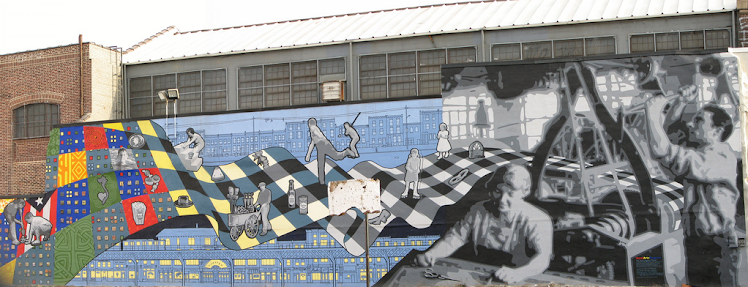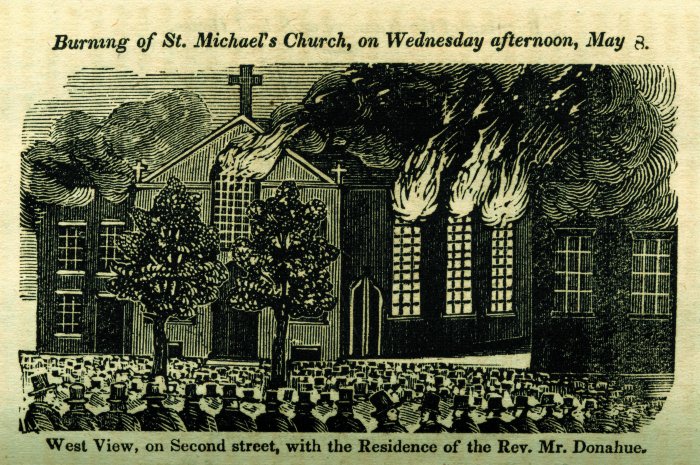•1820 Kensington was incorporated and became a self-governing district until it consolidated with the city of Philadelphia in 1854.
•1840s-1870s The Irish arrived in great numbers as a result of famine and settled heavily in Kensington near St. Michael’s Roman Catholic Church and the Nanny Goat Market. This community was largely composed of Protestant and Catholic handloom weavers who worked in shanties or “factories” in the area.
•1840 John Wagner, a Bavarian brew master, brewed the first successful lager beer and Kensington became home to a large number of lager beer manufacturers. German migration to Northern Liberties resulted in the explosion of brewing and brewing related industries in the area, including Ortlieb’s and Schmidt’s.
•1844 Kensington Riots: On May 6, a nativist rally in Kensington ignited three days of anti-Irish Catholic riots that killed several residents and destroyed St. Michael’s and St.Augustine’s Roman Catholic churches, a seminary, and dozens of properties. Violence erupted again in July of the same year in South Philadelphia in the neighborhood of the Catholic Church of St. Philip Neri.
•1854 Northern Liberties and Kensington were incorporated into the city of Philadelphia.
•1900-1940 Eastern European settlement continued to shape life in Northern Liberties. By 1920, a Hungarian enclave grew up around Mascher and Master Streets. By 1910, Philadelphia’s small Slovakian community numbered 2,000. Dispersed all across the city, clustering according to regional affinities carried over from Europe, a few distinct Slovak enclaves emerged in Point Breeze (South Philadelphia), Nicetown (North Philadelphia) and in two neighborhoods of the Northern Liberties. Northern Liberties’ Slovaks were primarily from western Slovakia (northern Hungary) and many practiced the wire-working craft near Girard Avenue. Ukrainian immigrants settled between 6th and 7th, just south of Girard Avenue. Albanians, who were a mix of Muslims, Orthodox Christians, and Roman Catholics, settled in Kensington. Albanians immigrants founded the church of St. Peter and St. Paul at Hancock and Oxford Streets as well as a mosque at Girard and Hancock.
•1920 Philadelphia was known as the “Workshop of the World” for its great diversity of industries, many of them located in Northern Liberties and Kensington.
•1968-1985 Urban renewal efforts in North Philadelphia resulted in the displacement of Latinos. The Latino communities in Northern Liberties were
pushed north of Girard Avenue into Kensington, where they clustered around 5th Street. Today, the neighborhood around 5th Street and Lehigh Avenue is the most identifiable Latino neighborhood in Philadelphia, although remnants of older Latino settlements in Spring Garden and Southwark remain. Located in the Fairhill neighborhood, el Centro de Oro is the Latino commercial district centered around North 5th Street. The Golden Block’s many shops, restaurants, bakeries, and botánicas make it the “Main Street” of el barrio.
•1990s-present Northern Liberties, Kensington, and Fishtown experienced a new phase of economic investment and development resulting in a rise in property values that threatened the working-class and older populations in the neighborhood with displacement. Once again, the landscape has been dramatically transformed as many of the industrial sites that for decades stood as visual reminders of the once vibrant industrial life that sustained this area were either razed or redeveloped into residential properties.
These facts were adopted from philaplace.org



